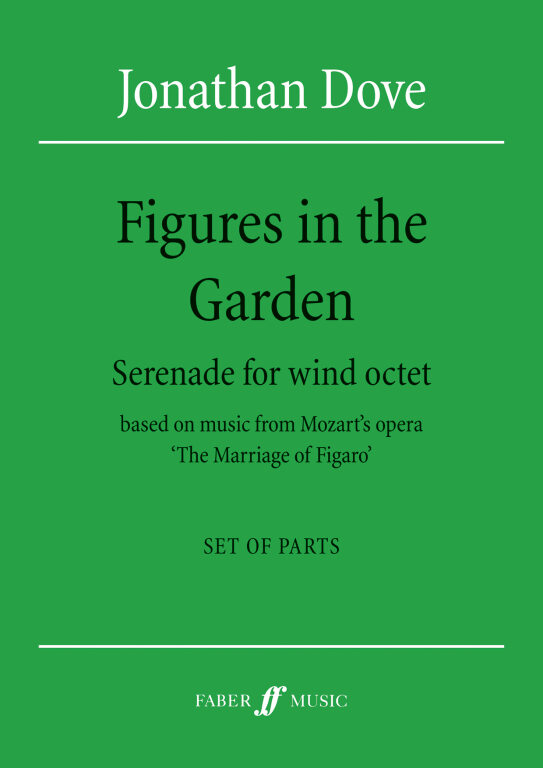价格: $39.19 不含税
Dove, Jonathan: Figures in the Garden (parts)
存款: Woodwind Ensemble
页数: 112 页
首次出版: 1999年6月9日
出版者: Faber Music
刊物代码: 0571564348
ISMN: 9780571564347
The instrumental parts to Figures in the Garden composed by Jonathan Dove. Arranged for Wind Octet.
For their 1991 Mozart bicentenary celebrations, Glyndebourne commissioned five composers to write wind serenades. Each serenade was to be musically connected in some way with one of Mozart's operas, and to be played outdoors before the performance of the opera. I was asked to compose a piece to precede The Marriage of Figaro. Although Mozart's comic masterpiece needs no introduction, musically or otherwise, I was attracted by the aptness of playing a serenade in the garden before performances of an opera whose last act is set in a garden, and which itself includes a number of serenades: Voi che spaete, Deh vieni, non tardar, and Suzanna and the countess' letter-writing duet Canzonetta su sull ‚aria'. I had the idea that with all the performances of The Marriage of Figaro that had taken place at Glyndebourne, sounds from the opera had in some way impregnated the garden: snatches of rec itative, musical figures, instrumental colours. I didn't want to overwork Mozart's tunes - it would be disastrous if the audience were tired of them before the opera had even begun - but each movement of Figures in the Garden is developed from a musical idea in the opera. Here and there an alternative scenario emerges: Suzanna sings her aria in the rain (because it's an English garden), and Figaro and Suzanna finally enjoy a moment of shared tranquillity that is denied them in the opera.
Jonathan Dove
For their 1991 Mozart bicentenary celebrations, Glyndebourne commissioned five composers to write wind serenades. Each serenade was to be musically connected in some way with one of Mozart's operas, and to be played outdoors before the performance of the opera. I was asked to compose a piece to precede The Marriage of Figaro. Although Mozart's comic masterpiece needs no introduction, musically or otherwise, I was attracted by the aptness of playing a serenade in the garden before performances of an opera whose last act is set in a garden, and which itself includes a number of serenades: Voi che spaete, Deh vieni, non tardar, and Suzanna and the countess' letter-writing duet Canzonetta su sull ‚aria'. I had the idea that with all the performances of The Marriage of Figaro that had taken place at Glyndebourne, sounds from the opera had in some way impregnated the garden: snatches of rec itative, musical figures, instrumental colours. I didn't want to overwork Mozart's tunes - it would be disastrous if the audience were tired of them before the opera had even begun - but each movement of Figures in the Garden is developed from a musical idea in the opera. Here and there an alternative scenario emerges: Suzanna sings her aria in the rain (because it's an English garden), and Figaro and Suzanna finally enjoy a moment of shared tranquillity that is denied them in the opera.
Jonathan Dove
 Deutsch
Deutsch English
English Español
Español Français
Français Magyar
Magyar Polski
Polski Română
Română Slovenský
Slovenský Slovenščina
Slovenščina
